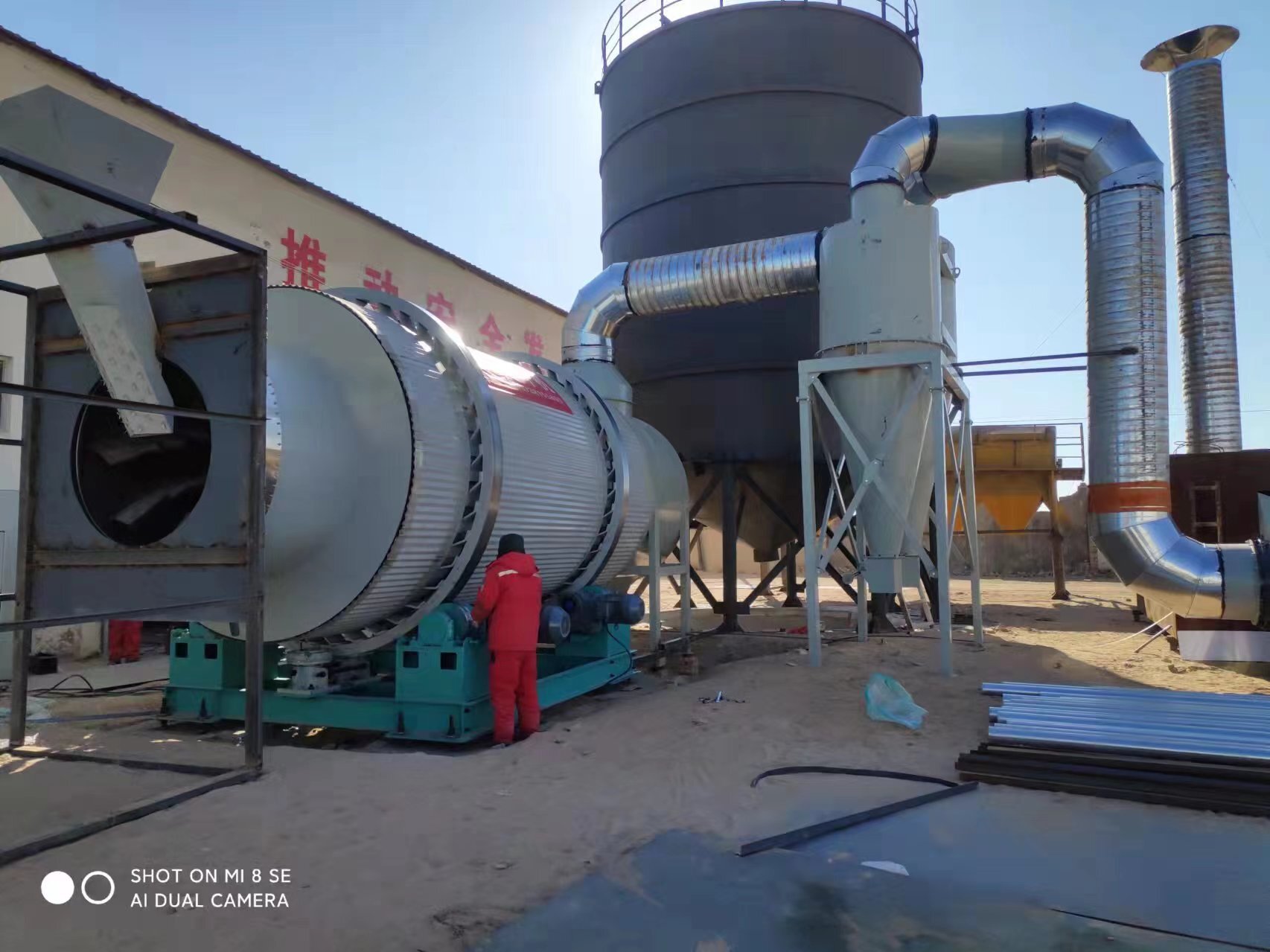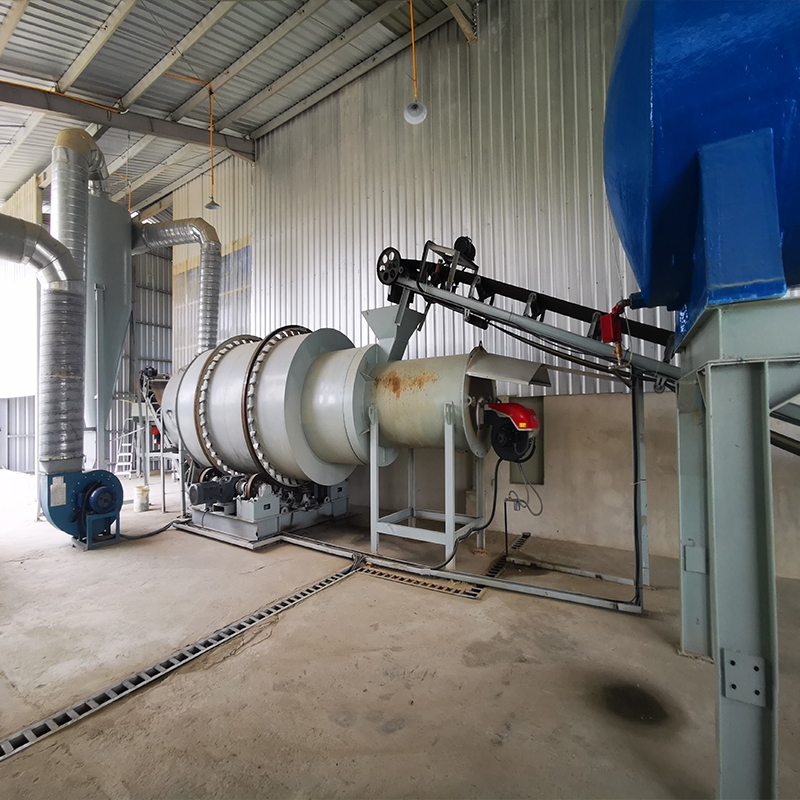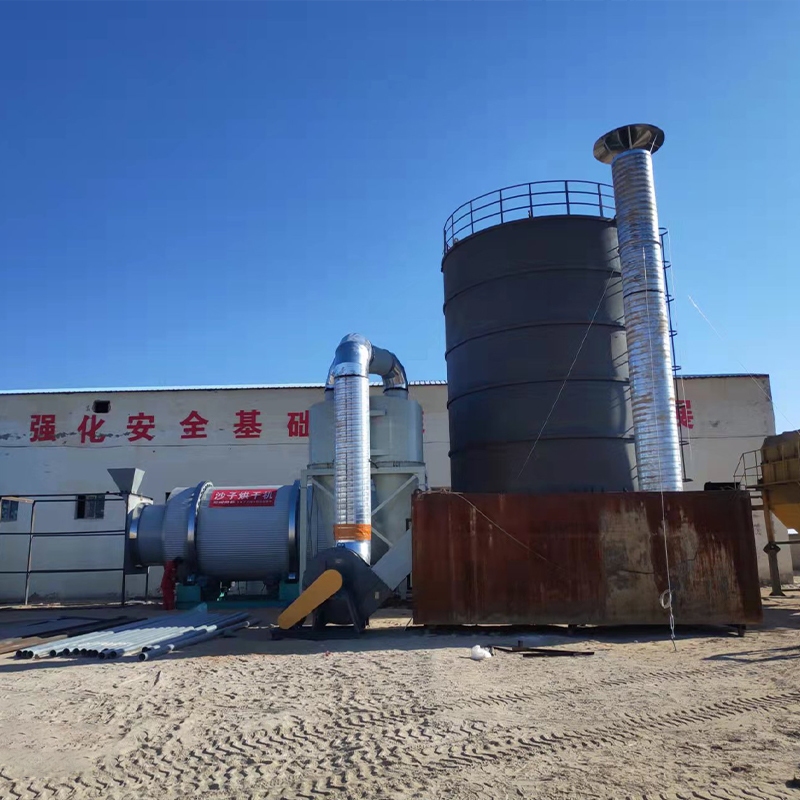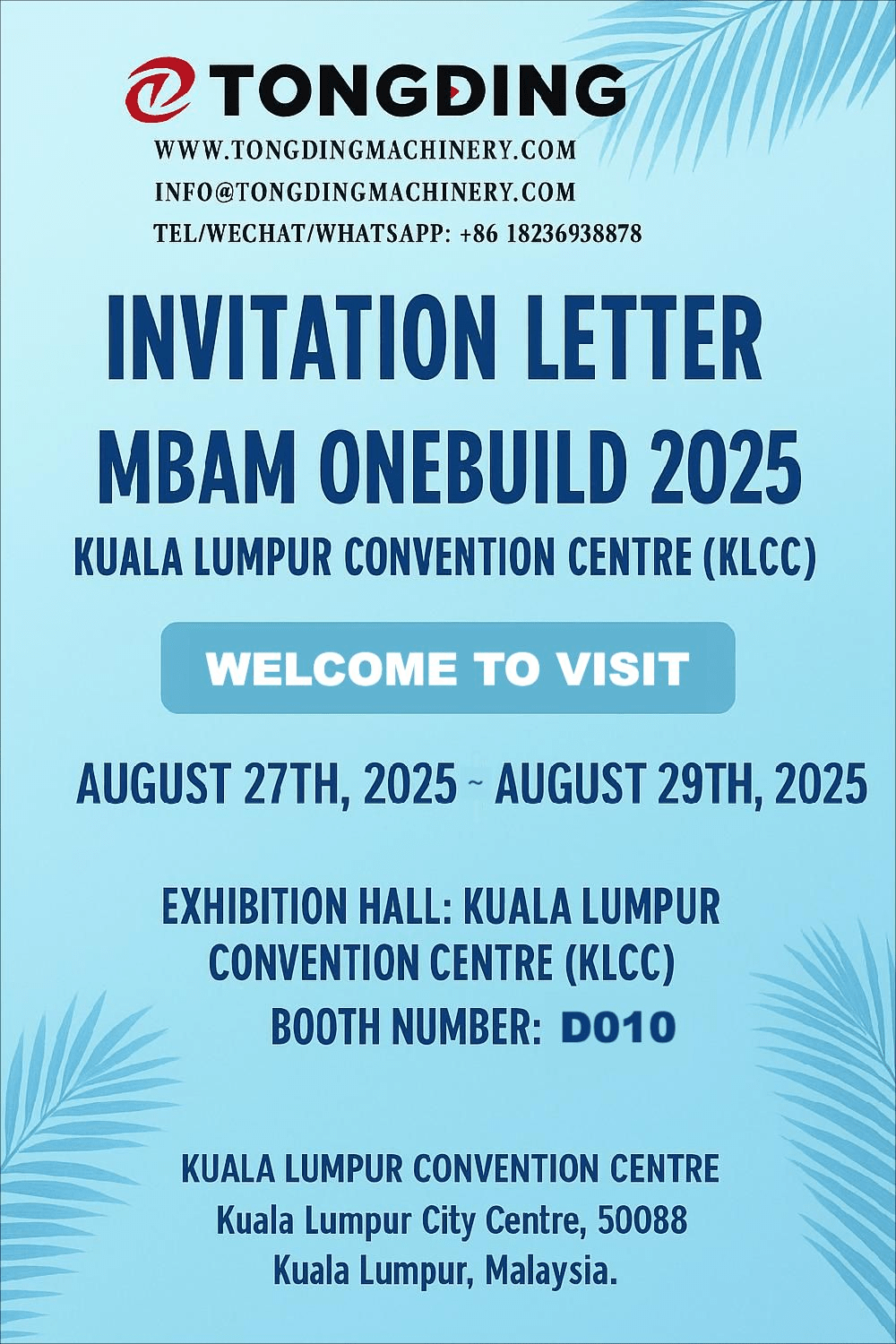News
-
 2025-10-09
2025-10-09Zhengzhou Tongding Unveils Next-Generation Sand Drying Line with Enhanced Efficiency
[ZHENGZHOU, CHINA] – Zhengzhou Tongding continues to revolutionize sand processing with its newly upgraded sand drying production line. The latest iteration features breakthrough heat-recycling technology that significantly reduces energy consumption while maintaining superior drying efficiency – a game-changer for construction and mining industries worldwide. Industry-Leading Advantages: – Smart Heat Recovery System Patented thermal technology recycles waste heat, cutting fuel costs by 30% and reducing carbon footprint – All-Climate Adaptive Design Enhanced insulation and sealing ensure stable operation in extreme temperatures (-20°C to 50°C) – Low Maintenance Operation Wear-resistant components and quick-access design reduce downtime by 40% compared to conventional dryers Global Application Success: Recent installations across Southeast Asia and the Middle East have demonstrated 99% operational reliability while processing various sand types – from river sand to manufactured sand for concrete production. Technical Breakthrough: The new line processes 50-200 tons per hour with 15% faster drying cycles, making it ideal for large-scale infrastructure projects and precast concrete plants. Call to Action: 🔥 Contact us today 📞 Request Customized Solution 📹 Watch Factory Video in Website
-
 2025-09-22
2025-09-22Tongding’s Innovative Sand Drying Technology Sets New Standard in Industrial Efficiency
Zhengzhou, China – Zhengzhou Tongding Heavy Industry Machinery Co., Ltd. continues to lead the global market with its cutting-edge sand drying production lines , combining revolutionary technology with unmatched reliability to meet the evolving needs of the construction and mining industries worldwide. Breakthrough Features of Tongding Sand Drying Lines ✅ Smart Energy Efficiency – 40% Reduced Fuel Consumption through advanced heat recovery system – Dual-Fuel Flexibility – operates on natural gas, diesel, or biomass – AI-Powered Optimization automatically adjusts temperature and rotation speed ✅ Exceptional Durability – Arctic-Grade Materials withstand temperatures from -50°C to 300°C – Corrosion-Resistant Coating for coastal and harsh environments – 24/7 Continuous Operation capability with minimal maintenance ✅ Eco-Friendly Operation – Zero Dust Emission with integrated baghouse filtration system – Noise Reduction Technology operates below 75dB 🌍 Russia – 2 units deployed for Arctic mining operations 🌍 Southeast Asia – 5+ installations for construction projects 🌍 Middle East – Major contracts for desert construction initiatives Technical Specifications: – Capacity: 5-200 tons/hour – Moisture Removal: From 25% to 0.5% – Power: 15-200 kW customizable Limited Time Offer 🎯 Free Project Assessment (First 20 inquiries) 🎯 Extended 1-Year Warranty Contact Us Today!
- 2025-09-15
Zhengzhou Tongding Revolutionizes Coal Drying Efficiency with Advanced Lignite & Coal Slime Drying Production Line
[ZHENGZHOU, CHINA] – Zhengzhou Tongding, a leading manufacturer of industrial drying solutions, continues to make strides in the mineral and energy sectors with its cutting-edge Coal Slime and Lignite Drying Production Line . Designed to tackle the challenges of high moisture content in low-rank coal and coal slime, this system offers a breakthrough in efficiency, durability, and eco-friendly operation. Key Advantages of the Tongding Coal Drying Production Line: 1. High Efficiency & Large Capacity The drying system utilizes advanced mechanical and thermal engineering principles to achieve rapid moisture reduction, enabling continuous large-volume processing ideal for industrial-scale operations. With capacities customizable from 10 T/H to 100 T/H+, it meets diverse client requirements. 2. Significant Energy Savings Through intelligent heat distribution and closed-loop heat recycling technology, the Tongding dryer reduces energy consumption by up to 30% compared to conventional dryers. This translates into lower operating costs and a quicker return on investment. 3. Environmentally Friendly Design The system is equipped with a multi-stage dust removal and deodorization system (including cyclone separators and baghouse dust collectors), ensuring emissions comply with international environmental standards—a critical advantage for markets with strict sustainability regulations. 4. Enhanced Safety & Automation Automated temperature and moisture controls prevent overheating...
-
 2025-09-09
2025-09-09Innovation in Construction: Zhengzhou Tongding’s Dry Mortar Production Line Sets New Industry Standards
Zhengzhou, China – As the global construction industry continues to evolve, Zhengzhou Tongding is leading the charge with its state-of-the-art Dry Mortar Production Lines . Designed for efficiency, durability, and versatility, our systems are transforming how construction materials are produced and utilized worldwide. Why Choose Tongding’s Dry Mortar Production Line? ✅ Unmatched Efficiency – High-Capacity Output : Produce 5-100 tons of premium mortar per hour, tailored to projects of any scale. – Energy-Saving Technology : Advanced thermal systems reduce energy consumption by up to 30% , lowering operational costs. – Automated Control : PLC-based intelligent monitoring ensures precise mixing ratios and consistent quality. ✅ Durability & Reliability – Robust Construction : Built with wear-resistant materials to withstand harsh environments and heavy use. – Low Maintenance : Easy-access components and self-cleaning systems minimize downtime. – Long Lifespan : Engineered for years of reliable performance with minimal upkeep. ✅ Eco-Friendly Operation – Dust-Free Design : Integrated dust collection systems capture 99.9% of particles, meeting strict environmental standards. – Waste Reduction : Optimized material usage reduces waste and maximizes resource efficiency. ✅ Global Success Stories – Africa : Deployed in Nigeria and Kenya for affordable housing projects. – Asia : Supporting infrastructure development...
-
 2025-09-01
2025-09-01Innovation in Sand Drying: Zhengzhou Tongding’s Advanced Sand Drying Production Line Sets New Industry Standards
Zhengzhou, China – As global demand for efficient sand processing solutions continues to rise, Zhengzhou Tongding is leading the industry with its cutting-edge Sand Drying Production Line . Designed for durability, energy efficiency, and unmatched performance, our systems are transforming sand drying operations across construction, mining, and industrial sectors worldwide. Why Choose Tongding’s Sand Drying Production Line? ✅ Unmatched Efficiency – High-Capacity Drying : Processes 5-100 tons of sand per hour, catering to both small-scale and industrial projects. – Fuel Flexibility : Compatible with diesel, natural gas, biomass, or electricity, reducing operational costs by up to 30% . ✅ Durability & Reliability – Robust Construction : Heat-resistant and corrosion-resistant materials ensure longevity in harsh environments. – Low Maintenance Design : Easy-access components and self-cleaning systems minimize downtime. ✅ Eco-Friendly Operation – Dust Reduction Technology : Advanced cyclone and bag filter systems capture 99.9% of dust particles. – Energy Recovery System : Recycles waste heat to maximize energy efficiency and reduce carbon footprint. ✅ Global Success Stories – Asia : Used in Vietnam and the Philippines for industrial and mining applications. – South America : Serving infrastructure projects in Brazil and Colombia. Key Applications – Construction Industry : Dry sand for...
-
 2025-08-27
2025-08-27Join Tongding at MBAM ONEBUILD 2025: Revolutionize Your Construction Projects in Kuala Lumpur!
KUALA LUMPUR, Malaysia – Zhengzhou Tongding is thrilled to announce our participation in MBAM ONEBUILD 2025 , Malaysia’s premier construction and building materials exhibition! Visit us at Booth D010 from August 27th to 29th, 2025 , at the Kuala Lumpur Convention Centre (KLCC) to discover cutting-edge solutions designed to elevate your projects to new heights. Why Visit Tongding at MBAM ONEBUILD 2025? ✅ Live Demos : Witness our dry mortar production lines and sand drying systems in action, tailored for Southeast Asia’s climate and construction needs. ✅ Expert Insights : Consult our engineers on optimizing your projects for efficiency, cost savings, and sustainability. ✅ Exclusive Show Offers : On-the-spot discounts and personalized solutions for attendees. ✅ Network with Peers : Connect with industry leaders and explore partnerships across the region. Featured Innovations for Malaysia: 🔥 Smart Dry Mortar Plants : Energy-efficient systems with 30% lower operating costs , ideal for Malaysia’s infrastructure boom. 🔥 Sand Drying Solutions : Humidity-resistant technology to handle tropical conditions. Event Details: 📅 Date : August 27-29, 2025 📍 Venue : Kuala Lumpur Convention Centre (KLCC) 🎯 Booth : D010 Special Offer for Attendees: – Free Project Consultation : Bring your project plans for a customized...

